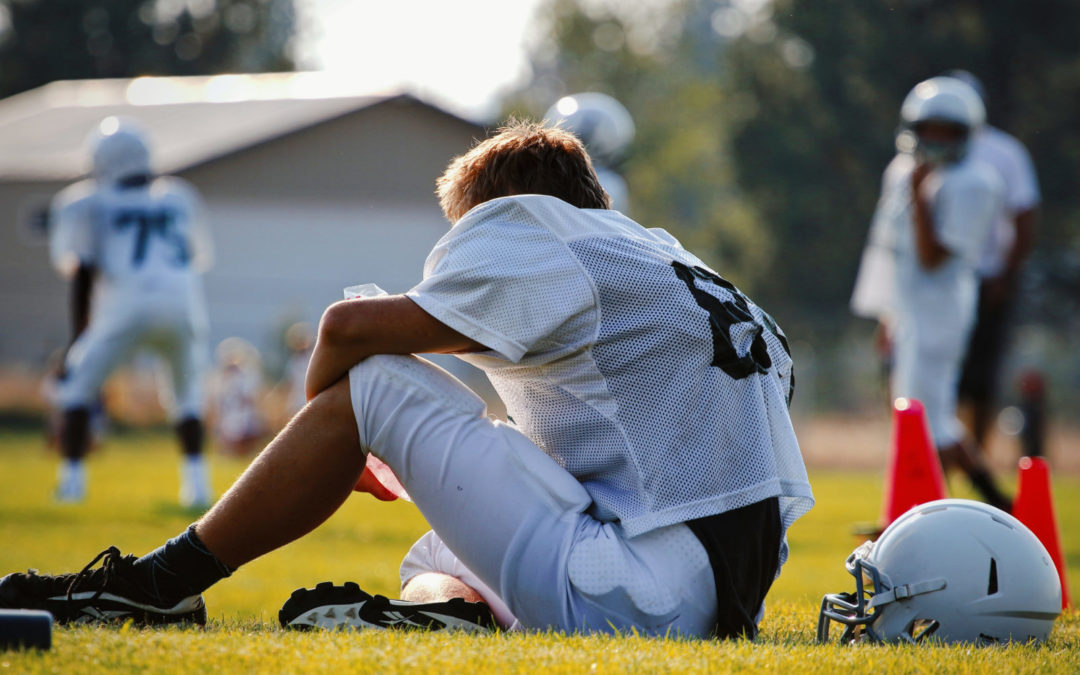In college, every practice is filmed and not a single drill escapes the video camera lens. This leads to some embarrassing and even hilarious moments in the meeting rooms where players and coaches go through the practice video together. However, these film sessions offer an important time for personal evaluation, where you can quietly observe yourself performing and take mental notes.
A couple of years into my college playing experience, I grew tired of watching practice film and seeing my body look stiff as I ran around in drills. I admitted to myself that I was more of a weight room athlete who was strong as an ox in the gym with a 440 pound bench press and a 685 pound squat, but not very flexible or fluid on the field. I wanted to improve my performance and get more playing time, and it was clear that I had to address this deficiency to get there.
I decided to get unconventional with my training that summer to improve my flexibility and agility. A star teammate of mine, Mike Davis, achieved a black belt in Tae Kwon Do at local dojo called Secrease’s Tae Kwon Do. Mike would do the splits on the field during stretches, and I knew it was his martial arts training that enabled his body to do that. I called Secrease’s as soon as my spring semester ended and signed up for eight weeks of summer classes.
Oh man, the pain. At the start of my classes that summer, the instructors would stretch me for nearly 45 minutes. Some of the work they did to me, like seating me into an archaic wooden machine that cranked my legs into near splits, felt like torture. My body was soaked in sweat before I even performed any kicks, blocks or punches. The results turned out to be incredible.
When I entered fall training camp at the close of summer, the eight weeks of martial arts changed the way I moved on the field of play. My coach affirmed as much after the first film session at camp, saying to me after the meeting closed, “You look smooth, what happened to you this summer?”
I broke into the regular playing rotation for the first time that season.
All these years later, a lot of young athletes are still training conventionally like I initially did in college, which is predominantly one-dimensional weight lifting focused on bench press, squats and sprints. I call this work one-dimensional because the body is only moving and getting stronger in one fixed direction and that is not how the body actually moves in sport. This kind of training is also one-dimensional in that it doesn’t address flexibility, coordination, balance, or integrate the overall human movement system made up of a myriad of smaller muscles that span from the core outward.
Greg Roskopf, MS, a biomechanics consultant who has worked with athletes from the Denver Broncos, the Denver Nuggets, and the Utah Jazz explains, “Conventional weight training isolates muscle groups, but it doesn’t teach the muscle groups you’re isolating to work with others.” Human athletic performance requires a completely integrated and balanced muscular system.
If you think I’m going to encourage your child to sign up for martial arts in order to take their sports performance to the next level, well, I’m not. I’m encouraging parents and their young athletes to enroll in:
Yoga classes.
I didn’t need any of the self-defense moves I learned in Tae Kwon Do and I honestly can’t imagine how I would successfully land a flying roundhouse kick in a street fight. Yoga provides all of the flexibility benefits plus builds integrated body and core (abdominal) strength.
The core conditioning of an athlete is fundamental to athletic performance. As an example, athletes in one study who underwent 9 weeks of core training program improved their vertical take off velocity and vertical jump. Typically, you would expect this result from 9 weeks of leg strength training.
Yoga is a somatic mind body experience. So, as a training tool, it goes beyond the realm of stressing the body to improve strength and muscle size and into the following significant benefits for athletes:
- Improves flexibility by 35% in only 8 weeks. (WebMD)
- Develops the ability to center and control emotional responses.
- Builds awesome core strength.
- Improves focus.
- Reduces stress levels.
From Lebron James, to Vernon Davis of the Washington Redskins to former player Ryan Giggs of Manchester United, many elite performing athletes incorporate a dedicated yoga practice into their yearly training regimen. It is cheap to try out a class and Yoga studios are not hard to find. This kind of workout is likely going to be a welcome break from the regular sport specific training your child engages in each week. Try a class with them in the next week and let me know how it goes.
Photo by Timothy Elberly on Unsplash

